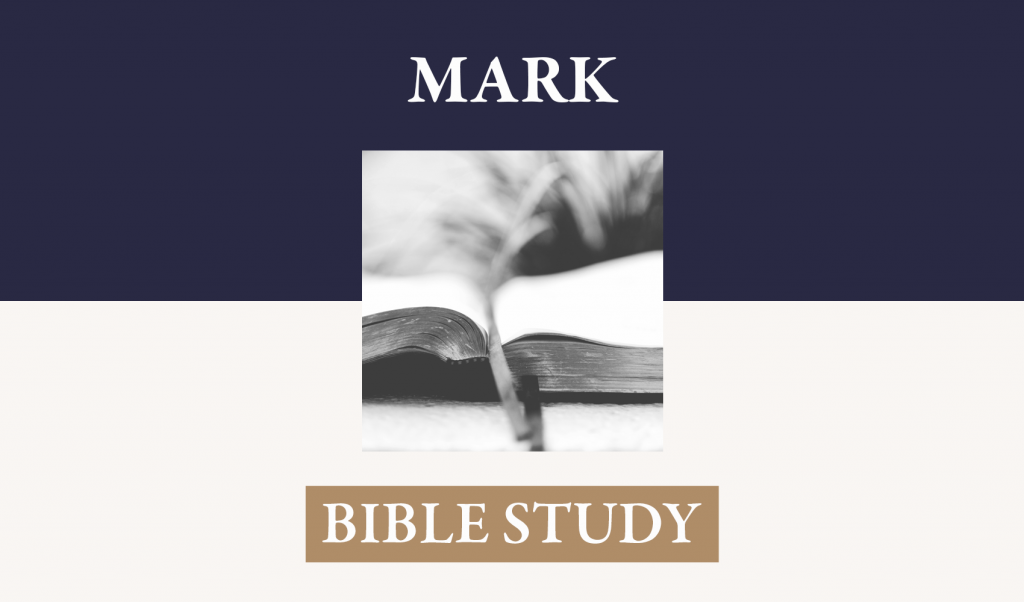Lesson Focus: This lesson will reassure you that, even in the face of overwhelming odds or seeming defeat, you can experience an epic victory.
Stand Tall: Mark 15:1-5.
[1] And as soon as it was morning, the chief priests held a consultation with the elders and scribes and the whole Council. And they bound Jesus and led him away and delivered him over to Pilate. [2] And Pilate asked him, "Are you the King of the Jews?" And he answered him, "You have said so." [3] And the chief priests accused him of many things. [4] And Pilate again asked him, "Have you no answer to make? See how many charges they bring against you." [5] But Jesus made no further answer, so that Pilate was amazed. [ESV]
The responsibility for the prosecution of Jesus is shifted from the Sanhedrin to Pontius Pilate, the Roman prefect of Judea. As at the trial of the Sanhedrin, Mark portrays Jesus again submitting in silence and acquiescence, this time before the relentless gears of the Roman prosecution beginning with the sentence of Pilate and continuing with the abuse of the soldiers and the crucifixion itself. The crucifixion of Jesus is narrated by Mark, as it is throughout the New Testament, with utmost restraint and objectivity. There is no intention to exploit the savagery of crucifixion either to sensationalize Jesus’ death or to evoke sentimentality from the reader. Especially in Mark the accent on the crucifixion narrative falls not on its brutality and cruelty but on the shame and the mockery to which Jesus is subjected. As in the prayer of Gethsemane, so, too, at the crucifixion, the inner suffering supersedes the physical horror. The mockery begins in earnest with the soldiers in verses 16-20. Too weak to bear His own cross [21], Jesus is degraded by punishment befitting a slave or criminal at a disgraceful place [22], in the company of thieves [27], with a mock accusation [26]. Bystanders rail at Jesus [29-30], and the chief priests taunt Him [31-32]. Even those who suffer His same fate reproach Him [32]. The parade of mockers shook their heads [29], which in Judaism signaled scorn and disgust. Nevertheless, when Jesus dies, rejected and alone, the most significant event of the Gospel of Mark transpires: the temple curtain is torn in two and the Gentile centurion confesses Jesus as the Son of God. Only at the cross can Jesus be first confessed in faith as the Son of God.
[1] In the province of Judea matters of legislation, the administration of justice, and government were subject to the supervision of the Roman provincial authorities. Generally speaking, however, the Romans permitted territories to retain their own legislation, administration of justice, and local government. The Sanhedrin exercised not only civil jurisdiction according to Jewish law but also a certain degree of criminal jurisdiction. But capital sentences were reserved to the Roman magistrate as sole bearer of the full imperial authority. This was one of the most carefully guarded prerogatives of the Roman government and permitted no concessions. Consequently, the Sanhedrin had to surrender its prisoner to the Romans if the sentence of the court was to be carried out. The prefect could exercise the right of confirmation or he could reverse the death sentence passed by the Jewish council. Naturally, this alternative demanded that he acquaint himself independently with the subject of the conviction. In such a case a new trial had to be conducted before the Roman court, and the Sanhedrin would be required to convince the governor that Jesus had committed a capital offense under Roman law. Since blasphemy was not one of the crimes for which Roman law provided punishment, and was a subject which did not concern the Roman judge, this charge played no part in the trial which followed. The incendiary charge of high treason, which the Roman court could not possibly dismiss, was substituted in its place. This decision constituted the final action of the council and terminated its all-night session. Jesus was therefore bound and led through the city from the quarters of Caiaphas to the strongly fortified palace of the Herods, where He was accused of high treason before Pontius Pilate. Pilate came to Judea in 26 AD and showed himself a harsh administrator who despised the Jewish people and their particular customs. It was necessary for the Sanhedrin to bring its business to Pilate as soon after dawn as possible because the working day of a Roman official began at the earliest hour of daylight. If the chief priests had delayed until morning to examine Jesus and then sought to bring Him before the governor, they would have arrived too late. That is a major reason why the Jewish court conducted its own proceedings throughout the night.
[2-5] While the Sanhedrin was essentially a bench of judges, judgment in a Roman tribunal was the sole responsibility of the imperial magistrate. Those who usually sat with him on the bench, the barristers and officials, had no judicial power, but served only as legal advisors. The proceedings were opened by an indictment on the part of the plaintiff and by a magisterial examination in which the principle of free assessment of testimony was exercised. The statements of the defendant and the evidence of witnesses were regarded as the chief source of proof. When all evidence had been taken, the magistrate announced his verdict from the judgment seat, and the sentence had to be executed immediately. The chief accusation was that Jesus was guilty of high treason against the government because He wanted to make Himself king of the Jews. It must be considered highly ironical that having branded Jesus a blasphemer because He failed to correspond to the nationalistic messianic ideal, the council now wanted Him condemned by the pagan tribunal on the plausible allegation that He made claims of a distinctly political character. Jesus was the king of the Jews by virtue of His messiahship, but the implications in the secular designation were false. Therefore, He responded affirmatively to Pilate’s question whether He was the king of the Jews, but with a reservation which hinted that His own conception of kingship did not correspond to that implied in the question. If a concise, unreserved affirmation was implied in His response, Pilate would have declared the examination ended and passed sentence. The restrictive wording of Jesus’ admission, however, made necessary an examination of the accusers for the purpose of obtaining further information. The chief priests seized the opportunity of substantiating their charges, but only Luke provides the details. According to Luke 23:2 the Sanhedrin urged the multiple charge that Jesus was inciting the populace to riot, that He was forbidding the payment of taxes to Caesar, and that He had royal pretensions. When Pilate remained unconvinced, they reintroduced their first impeachment that Jesus was stirring up the people with His teaching throughout Judea and Galilee [Luke 23:5]. After listening to the chief priests, Pilate challenged the accused to define His position, but to his astonishment Jesus refused to defend Himself. The theme of Jesus’ silence is sustained throughout Mark’s passion narrative. From the time of His arrest until His death, He makes only two brief responses, one to Caiaphas and one to Pilate. Mark’s reader senses in Jesus’ passivity and silence that the sovereign Lord of history is accomplishing His mysterious purposes to which even the Son of Man must be submissive.
Stand Alone: Mark 15:12-13,32.
[12] And Pilate again said to them, "Then what shall I do with the man you call the King of the Jews?" [13] And they cried out again, "Crucify him." [32] Let the Christ, the King of Israel, come down now from the cross that we may see and believe." Those who were crucified with him also reviled him. [ESV]
[12-13] Three times Pilate lobbies for Jesus [15:9,12,14]. Certainly Pilate possessed the power to find for Jesus, but whether, from a political standpoint, it was wise to do so was another question. By and large Pilate disdained his Jewish subjects, but even dictators cannot completely disregard the will of their subjects. Mark indicates that Pilate harbored doubts about the necessity of Jesus’ execution. Nevertheless, Pilate seems to have concluded that Jesus might still have some political value and Pilate was willing to sacrifice an innocent prisoner for political expediency and security. Whatever Pilate’s strategy, the Roman governor becomes the second party implicated in Jesus’ death. The chief priests instigated the plot against Jesus, but the Roman prefect bears responsibility for executing it. In the trial scene, as elsewhere in Mark’s Gospel, inescapable ironies confront us. Pilate, who begins by seeking amnesty for Jesus, ends by seeking it for himself. The Jewish subjects, on the other hand, whose duty it is to obey, assert their will and win the day. The governor is thus strangely governed. The free sovereign loses his freedom to forces he presumes to control, whereas Jesus, the silent prisoner who has no control, remains true to His divinely ordained purpose, and thus alone remains truly free.
[32] At only one point does Mark depart from the reserve and restraint of his narrative of the crucifixion, and that is to emphasize the mockery to which Jesus is subjected. In the trial scene Jesus’ opponents were limited to chief priests, Pilate, and the soldiers, but at the crucifixion these voices merge in a larger chorus of scorn. Nondescript bystanders shake their heads and ridicule Jesus about His predictions regarding the temple. In this, too, Jesus fulfills the prototype of the suffering righteous man whose righteousness is the cause of ridicule. Like the bystanders, the chief priests and scribes see Jesus’ inability to save Himself as a refutation of His status as Son of God. The taunt for Jesus to come down from the cross is in essence the same temptation that He faced in Gethsemane, that is, to avoid the cup of suffering. At Gethsemane Jesus made the costly decision, which He now fulfills, to do the will of God rather than His own will. In this haunting picture of Jesus, fastened to a cross and assailed in mockery, we see proof of the amazing difference between God’s way and everything which men consider their goal or conceive of as being God’s way. There is no self-defense from Jesus, no effort to get even or get in the final word, no attempt to preserve at least a modicum of dignity and pride. Jesus surrenders in total vulnerability to the malevolence and violence of the world.
Stand Amazed: Mark 15:37-39.
[37] And Jesus uttered a loud cry and breathed his last. [38] And the curtain of the temple was torn in two, from top to bottom. [39] And when the centurion, who stood facing him, saw that in this way he breathed his last, he said, "Truly this man was the Son of God!" [ESV]
[37-39] Jesus maintained consciousness to His last breath; in the moment of death, an inarticulate cry burst from His throat. The strength of the cry indicates that He did not die the ordinary death of those crucified, who normally suffered long periods of complete exhaustion and unconsciousness before dying. The stark realism of Mark’s statement describes a sudden, violent death. Jesus’ death differed from the common experience of men in two respects. It was the death which God caused Him to die for us; and death was not His debt to sin but a reality to which He submitted. The meaning of His death becomes clear only from the perspective of the triumph of the resurrection which marked His vindication and demonstrated that death had no claim upon Him. The statement concerning the rending of the Temple veil is difficult. There were in fact two hangings in the Jerusalem Temple. An outer curtain separated the sanctuary from the forecourt, while the second, or inner, veil partitioned the Holy Place from the Holy of Holies to which the high priest alone was admitted on the Day of Atonement. It is not at once apparent whether Mark’s reference is to the inner or the outer veil. A tearing of the exterior curtain would have the character of a public sign, comparable to the darkness that covered the land. The rending of the interior veil would be visible, presumably, only to a few priests and could have been concealed from public knowledge by the Jewish authorities. The detail from top to bottom suggests an actual and irreversible occurrence which coincided with the moment of Jesus’ death. The reference then is to the magnificent curtain which in Herod’s Temple hung before the entrance and was visible from the forecourt when the doors were opened during the day. This conclusion is supported by the fact that Jewish and Jewish-Christian traditions, which are divergent but clearly refer to the same event, speak of an astonishing happening at the entrance to the sanctuary, not at the partition between the sanctuary and the Holy of Holies. The early Church Fathers commonly interpreted the event as a warning sign of the impending destruction of the Temple, confirming the sober prophecy of Mark 13:2. The rending of the Temple veil is a public sign that the rejection of the Messiah by the leaders of the people discloses a failure in sensitivity to the divine purpose so serious that it seals the disaster of 70 AD. Jesus’ death and the destruction of the formal structures of Judaism are inseparably bound together. The centurion who stood facing Jesus was the Roman officer who superintended the execution. He had followed each stage of the crucifixion exactly, and knew that Jesus had not died the normal death of crucified men. The strength which He possessed at the moment of death was so unusual the centurion spontaneously acknowledged Jesus’ transcendent dignity. In Mark’s account the reason for the exclamation is unmistakably the manner of Jesus’ death, rather than any accompanying event. By Son of God the centurion presumably meant that Jesus was a divine man or deified hero who accepted humiliation and death as an act of obedience to a higher mandate. It can be expected that his words reflect a religious point of view shaped by popular Hellenism. Mark, however, clearly intended his readers to recognize in the exclamation a genuine Christian confession, in the consciousness that these words are true in a higher sense than the centurion understood.
Stand Victorious: Mark 16:1,5-7.
[1] When the Sabbath was past, Mary Magdalene and Mary the mother of James and Salome bought spices, so that they might go and anoint him. [5] And entering the tomb, they saw a young man sitting on the right side, dressed in a white robe, and they were alarmed. [6] And he said to them, "Do not be alarmed. You seek Jesus of Nazareth, who was crucified. He has risen; he is not here. See the place where they laid him. [7] But go, tell his disciples and Peter that he is going before you to Galilee. There you will see him, just as he told you." [ESV]
[1] The Sabbath was the concluding day of the week for the Jews. The next day (Sunday) was designated as the first day of the new week. This specifies Sunday as the day of Jesus’ resurrection. The Jews anointed corpses with oil mixed with myrrh and aloes. These spices were evidently purchased by the women after sunset on Sabbath in preparation for the anointing of Jesus’ body early the next morning. The purpose of anointing was not to embalm but to perfume the decaying corpse as an act of devotion. Normally the dead were anointed at the time of interment. According to Mark, however, the lateness of the hour on the day of preparation necessitated postponing the anointing of Jesus until after the Sabbath. For the third time Mark lists the names of the women attending the cross, burial, and empty tomb of Jesus. The listing of proper names – so unusual for Mark – certifies on the basis of eyewitnesses the veracity of the events described. More remarkable is the repetition of the list, and even more so that they are the names of women. Jewish opinion of women, especially in religious matters, was not always positive. Later accounts verify the resurrection by male testimony. The mention of women as witnesses attests to the veracity of the resurrection narrative, for had early Christians fabricated the resurrection story, the testimony of women was no way to go about it. Unless women were actually present at the tomb, the early church would scarcely have placed them there since Judaism did not accept the testimony of women.
[5-7] Entering the tomb, the women saw a young man dressed in a white robe. The Greek word for alarmed means both fear and wonder, astonishment and distress. The first word of the divine messenger addresses the foremost concern of the women – their fear. He further addresses their hope. The women, intent on their funeral errand, are preoccupied with death. They endeavor with their spices and anxieties to bring some kind of closure, however inadequate, to a tragic drama. But all their preparations leave them unprepared for the reality they encounter; what they intend to be a terminal visit is but a commencement. The Crucified One, says the angel, has been raised. The angel invites the women to see the place where they last saw the body of Jesus. The references to the place of His burial and to Jesus as the crucified one are of crucial importance. The women are not directed to a mystical or spiritual experience or to a numinous encounter. They are directed specifically to Jesus, who died by a crucifixion they witnessed, was buried in a place they witnessed, and now has been resurrected. The announcement of the divine messenger establishes an inseparable continuity between the historical Jesus and the resurrected Jesus. The invitation to examine His resting place is unmistakable evidence of an empty tomb. The empty tomb is only one of several facts attending the resurrection. It is not the empty tomb that proves the resurrection, but the resurrection that makes the empty tomb meaningful. The empty tomb testifies that the Jesus who died as a bodily being was raised as a bodily being, and it is the historical place and point in time that marks the transition between His two orders of existence. Along with early Christianity as a whole, Mark is interested in faith in the resurrected Jesus, not in proofs of His existence. It is an encounter with the resurrected Lord, not the empty tomb, that produces faith. The angel’s final word to the women is a fulfillment of 14:28 and is a remarkable word of grace and encouragement. The flight of the disciples, even Peter’s pitiful denial, have not been the last word. The last word belongs to the risen Lord. The announcement of the angel is not one of deserved blame but a promise of gathering and going before them. God completes His plans for the church despite human failure.
Questions for Discussion:
1. In the providence of God, Jesus was executed by crucifixion rather than being stoned (the usual way in which Jews executed blasphemers). Read Deuteronomy 21:22-23; Galatians 3:13-14 and 2 Corinthians 5:21. Why did Jesus have to be crucified, not stoned, in order to accomplish His mission to give his life as a ransom for many [Mark 10:45]?
2. What do you learn about Jesus from the way He handled His arrest, trial and crucifixion?
3. What is the significance of the temple curtain being torn in two, from top to bottom?
4. Why is the continuity between the historical Jesus and the resurrected Jesus important for your faith and for your witness to others? Why is the angel’s message in 16:7 such a word of grace and encouragement to the disciples and to Peter?
References:
The Gospel According to Mark, James Edwards, Eerdmans.
The Gospel According to Mark,

















